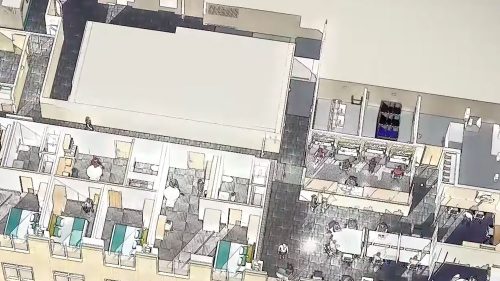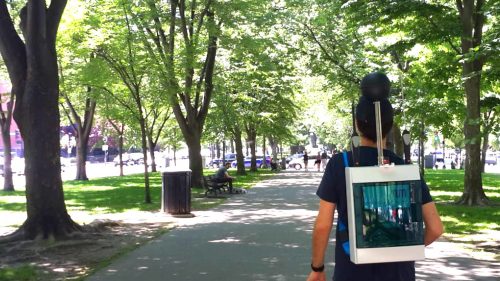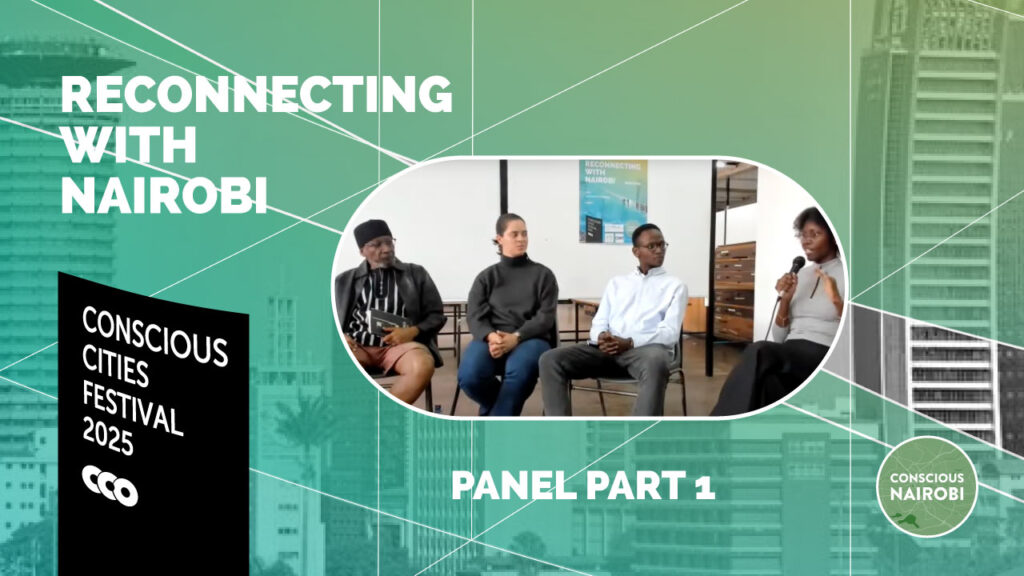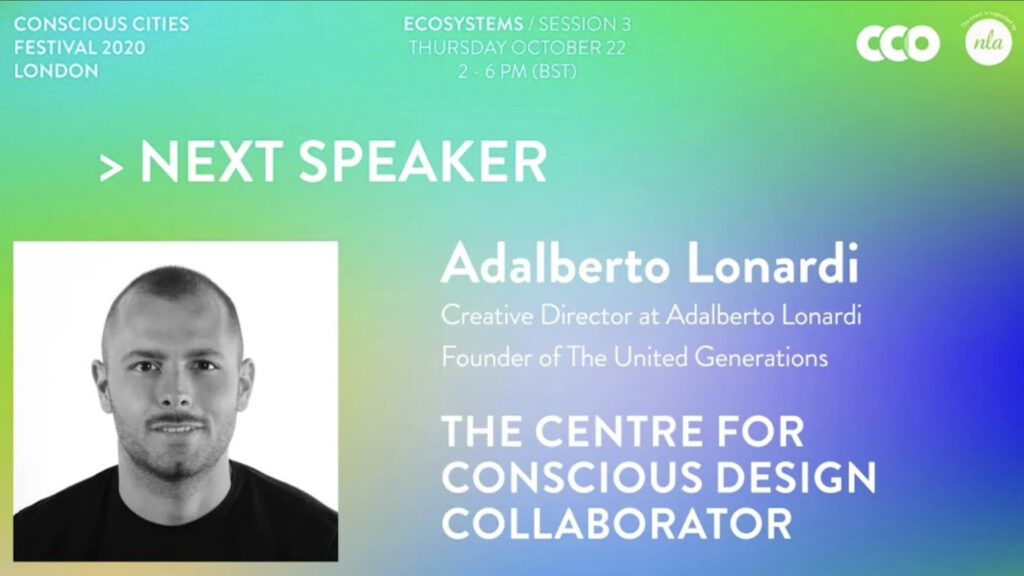Our environment shapes our lives. It impacts our physiology, our health, and our behaviors. In his 1954 call to arms, “Survival Through Design”, architect Richard Neutra stressed the intimate relationship between people and their environment. As individuals, he wrote, we can only be separated from our environment “in the abstract way in which we separate the water of two tributaries which have flowed together in a common river bed15.”
Unlike earlier in human history, when much of our time was spent outdoors, we now spend over 90% of our lives indoors9. The built environment is now our primary environment, and its design has profound effects on our well-being. As suggested by Neutra, this gives us the power to construct an environment truly optimized for us: an environment that promotes our health and longevity, encourages positive behaviors, and supports our cognitive abilities.
A growing body of research from building science, behavioral science, and medical science has begun to reveal what aspects of the built environment may promote or erode our well-being. However, until recently, there has been no way to integrate these findings into actionable solutions and to test their efficacy. Thanks to recent advances, however, a new breed of laboratory is making this work possible.
In this paper, we review the two methodologies traditionally used to study the relationship between people and their environment—laboratory experiments and field studies—and outline each one’s unique advantages and limitations. We then introduce the living lab, a new methodology to test how people react to and interact with the built environment. We use the Well Living Lab as a case study to illustrate this new methodology’s capabilities and advantages. We end by outlining the future direction of the living lab movement.
Laboratory and climate-chamber experiments
Laboratory experiments have allowed us to study the physiological and behavioral mechanisms underpinning people’s responses to aspects of the built environment.
In climate-chamber studies, human participants, or life-size manikins standing in for human participants, are placed into chambers where environmental variables such as humidity, temperature, and air supply rate can be precisely controlled. Individual environmental conditions, or, less often, combinations of environmental conditions, are varied3, and their effects on people’s responses are carefully measured.
In these studies, participants typically occupy the chamber for a limited time and complete tasks that are meant to serve as a proxy of real-world behavior. For example, in studies modeling office environments, participants may be asked to type10,17,28,29, complete proofreading tasks22,29, or solve math problems10,13,17,22,28,29. These tasks are simulated, highly-controlled activities, not participants’ real jobs or schoolwork. This means that participants’ experience is different from reality in two ways: the lab setting and the tasks they complete.
Chamber studies allow for precise characterization of environmental conditions and support causal inferences (e.g., increasing the temperature from 26°C to 35°C decreases math problem accuracy from 99% to 97%13). However, it is impossible to know how findings from chamber studies translate to real-world settings. For example, how would increased accuracy on math problems under certain environmental conditions translate to changes in productivity in the office? To assess whether findings from chamber studies generalize to real life, chamber studies need to be followed up with field experiments testing similar experimental conditions. Unfortunately, this is rarely done27.
In addition to chamber studies, laboratory behavioral science experiments inform our understanding of people’s responses to specific aspects of their environment. In these experiments, participants receive stimuli created to resemble specific aspects of real-world experience, and their responses are measured. For example, to understand people’s aesthetic preferences in the built environment, participants are asked to respond to images that contrast distinctive features such as variation in building height12, complexity of building surfaces20, or curvilinearity of walls26. Seeing an image of the built environment is meant to stand in for experiencing this environment. As architect Juhani Pallasmaa has stressed, our “experience of architecture is multi-sensory; qualities of space, matter and scale are measured equally by the eye, ear, nose, skin, tongue, skeleton, and muscle16.” Restricting the study of the built environment to only one perceptual system (vision), fails to capture the richness with which we experience it in real life. To borrow an analogy from the film Good Will Hunting, seeing a picture of the Sistine Chapel is not the same as experiencing the real thing.
As another example, to understand how people respond to stressful environments, researchers can provoke stress responses through a variety of methods ranging from submerging a participant’s hand in ice-cold water until the pain becomes too intense1,2,19, to the Trier Social Stress Test8, during which participants give a free-form speech and perform mental arithmetic in front of an audience. Participants’ physiological reactions (e.g., saliva biomarkers, galvanic skin response) and behavioral reactions (e.g., ratings, task performance) are measured. While such studies characterize how individuals respond to specific stress stimuli in an experiment setting, their results may not generalize to real-life situations. Moreover, laboratory studies often use relatively homogenous populations (i.e., college students) or animal models, further limiting generalization. For example, measuring rats’ behavioral responses to overcrowding4 may offer limited insight into people’s responses to a crowded open office layout.
To sum up, laboratory experiments offer the ability to control variables of interest and the power to make causal inferences. The experimental paradigms nevertheless may not accurately capture important aspects of our experience of the built environment and therefore fail to generalize to real-world situations.
Field Studies
Field studies have provided valuable observations about the relationship between people and their environments. These studies measure real behaviors of people in the built environment. For example, to understand how people respond to retail environments, studies have measured behaviors such as time spent in store (dwell), number of items examined, or value of purchases made23.
In observational field studies, people’s natural behavior is observed without manipulating any variables. For example, studies have examined people’s physical activity in schools, workplaces, and recreation areas18. Observational studies provide useful data that can inform public policy and city design, but do not allow for causal inferences of people’s responses to specific environmental conditions.
In quasi-experimental and experimental field studies, differences in the built environment are related to occupants’ responses. These studies quantify differences in occupants’ responses after changes are made to a site, or differences in occupant responses between sites that differ in one or more key ways from one another. For example, to examine the impact that plants have on students in educational contexts, some studies compared students’ level of attention before vs. after green wall installation in classrooms25, or students’ physiological stress before vs. after adding vegetation to a school yard7. Other studies examined differences across sites, comparing standardized test performance of students in schools that are surrounded by more vs. less vegetation30, or comparing attention of students in classrooms that have green views vs. ones that do not11.
Field study measures can be clear, real-life outcomes of interest, such as standardized test scores for students30, average length of postoperative hospital stay for patients24, or number of items produced per hour by factory workers6. However, it may harder to operationalize other outcome measures. For example, it is difficult, if not impossible, to measure productivity of modern day office workers21. Therefore, field studies may rely on self-report measures, such as subjective ratings of productivity5, in these cases.
Inevitably, if field studies are carried out across sites, there is a risk that observed differences may be due to confounding variables. In the aforementioned research on school vegetation and students’ test performance, level of vegetation may be related to socio-economic status of sites. In field studies conducted within one site over time, special care must be taken to ensure occupants’ responses are not subject to bias. The Hawthorne effect14, for instance, refers to the increase in factory workers’ productivity in response to every change in their working conditions due to scientific observation or novelty. Conversely, people may react negatively if conditions that they considered satisfactory are altered. Finally, specific effects of the built environment on real-life behavior may be difficult to detect, requiring a large data pool; a significant challenge considering the complex nature of methodologies used.
Can we bridge the two methodologies?
We have reviewed the advantages and limitations of two dominant methodologies used to study the relationship between people and their environment. Until recently, what has been missing was a way to bridge these methodologies, to retain full control of environmental variables, capture people’s real-world responses to environments, and make causal inferences. Due to recent technological advances and the knowledge gained from previous laboratory and field research, we are now beginning to develop such approaches.
Introducing living labs
Living labs offer a bridge between laboratory and field studies. These labs may include highly-controlled spaces that people use and occupy as they would a typical real-life environment. We use the Well Living Lab as a prime example of this new methodology.
The Well Living Lab, located in Rochester, Minnesota, is a collaboration between Delos, a wellness real estate and technology company that aims to create healthy buildings for occupants, and Mayo Clinic, the first and largest integrated nonprofit medical practice in the world. Scientific and medical research at the Well Living Lab is guided by Mayo Clinic and validated by the Well Living Lab Scientific Advisory Board, ensuring that studies are designed in a manner translatable to real-life situations.
The Well Living Lab facility features 5500 sq. ft. of reconfigurable testing space, separated into six modules. Each module can be configured into a separate environment, such as a studio apartment. Alternatively, contiguous modules can be combined to form larger environments, such as an open office or a two-bedroom apartment. The modules are constructed in such a way that the walls, floors, ceilings, plumbing, electrical wiring, ventilation, lighting systems, and data collection systems can be reconfigured easily and at low cost. See a guided tour of the testing space in the video below.
The Well Living Lab has a state-of-the-art system to control and measure environmental variables such as temperature, humidity, illuminance, sound, and air quality, among others. The lab also allows for the unobtrusive capture of human physiological and behavioral responses. Participants can move around freely and interact with the built environment as they normally would. Sensors embedded within the environment and wearables validated against gold-standard methodologies measure people’s movement, feeling, and sleep. Behavioral tests grounded in psychological research measure cognitive function, performance, and productivity. In sum, the lab has the capabilities to test how people respond to realistic, highly-controlled indoor environments.
Most relevant to the limitations of the discussed approaches: The Well Living Lab also has the remote control and monitoring capabilities to study how people interact with the indoor environment outside of the lab. Findings from studies conducted in the lab can be replicated in the field. For example, lab studies investigating ways that an office environment can improve productivity can be expanded to full-scale office buildings. In this way, the lab has the potential to turn any indoor environment into a living laboratory.
Conclusion
Ahead of his time, Richard Neutra highlighted our opportunity to shape the relationship we have with the built environment. Recent technological advancements now give researchers the power to study this relationship and to improve it. Living laboratories, like the Well Living Lab, allow us to control and measure real world indoor environments and—importantly—to link the environment to human behavior in the real world. Moving forward, the findings can be used to offer actionable, evidence-based solutions to architects and designers aiming to improve the health and well-being through design.
Following the Blitz of 1943, Winston Churchill advocated changing the design of the Commons Chamber by asserting that “we shape our buildings and afterwards our buildings shape us.” Living laboratories allow us to shape our indoor environments so that they can shape us to promote health and well-being.
References
1 Andreano JM, Cahill L. Glucocorticoid Release and Memory Consolidation in Men and Women. Psychol Sci. 2006;17(6):466-470.
2 Cahill L, Gorski L, Le K. Enhanced Human Memory Consolidation With Post-Learning Stress: Interaction With the Degree of Arousal at Encoding. Learn Mem. 2003;10(4):270-274.
3 Frontczak M, Wargocki, P. Literature survey on how different factors influence human comfort in indoor environments. Building and Environment. 2011;46(4):922-937.
4 Goeckner DJ, Greenough WT, Mead WR. Deficits in learning tasks following chronic overcrowding in rats. J Pers Soc Psychol. 1973;28(2):256-261.
5 Humphreys MA, Nicol JF, Raja IA. Field Studies of Indoor Thermal Comfort and the Progress of the Adaptive Approach. Advances in Building Energy Research. 2007;1(1):55-88.
6 Juslén H, Wouters M, Tenner A. The influence of controllable task-lighting on productivity: A field study in a factory. Applied Ergonomics. 2007;38(1):39-44.
7 Kelz C, Evans GW, Röderer K. The restorative effects of redesigning the schoolyard: A multi-methodological, quasi-experimental study in rural Austrian middle schools. Environment & Behavior. 2015;47:119-139.
8 Kirschbaum C, Pirke KM, Hellhammer DH. The “Trier Social Stress Test”–a tool for investigating psychobiological stress responses in a laboratory setting. Neuropsychobiology. 1993;28(1-2):76-81.
9 Klepeis NE, Nelson WC, Ott WR, et al. The National Human Activity Pattern Survey (NHAPS): a resource for assessing exposure to environmental pollutants. J Expo Anal Environ Epidemiol. 2001;11(3):231-252.
10 Lan L, Wargocki P, Lian Z. Quantitative measurement of productivity loss due to thermal discomfort. Energy and Buildings, 2011;43:1057-1062.
11 Li D, Sullivan WC. Impact of views to school landscapes on recovery from stress and mental fatigue. Landscape and Urban Planning. 2016;148:149-158.
12 Lindal PJ, Hartig T. Architectural variation, building height, and the quality of urban residential streetscapes. Journal of Environmental Psychology. 2013;33:36-36.
13 Liu W, Zhong W, Wargocki P. Performance, acute health symptoms and physiological responses during exposure to high air temperature and carbon dioxide concentration. Building and Environment. 2017;114:96-105.
14 Mayo E. The Human Problems of an Industrial Civilisation. Cambridge, MA: Harvard University Press, 1933.
15 Neutra RJ. Survival through design. Oxford: Oxford University Press; 1954.
16 Pallasmaa J. The eyes of the skin: Architecture of the senses. Hoboken, NJ: John Wiley & Sons; 1996.
17 Park J, Yoon C. The effects of outdoor air supply rate on work performance during 8-h work period. Indoor Air. 2011;21(4): 284-290.
18 Sallis JF. Measuring Physical Activity Environments. Am J Prev Med. 2009;36(4):S86-S89.
19 Sänger J, Bechtold L, Schoofs D, Blaszkewicz M, Wascher E. The influence of acute stress on attention mechanisms and its electrophysiological correlates. Front Behav Neurosci. 2014;8:353.
20 Stamps AE. Physical Determinants of Preferences for Residential Facades. Environment and Behavior. 1999. 31(6):723-751.
21 Sullivan J, Baird G, Donn M. Measuring productivity in the office workplace. Victoria University of Wellington, New Zealand: Centre for Building Performance Research; 2013.
22 Tanabe S, Haneda M, Nishihara N. Workplace productivity and individual thermal satisfaction. Building and Environment. 2015; 91:42-50.
23 Turley LW, Milliman RE. Atmospheric effects on shopping behavior: A review of the experimental evidence. Journal of Business Research. 2000;49:193-211.
24 Ulrich RS. View through a window may influence recovery from surgery. Science. 1984;224:420-421.
25 van den Berg AE, Wesselius JE, Maas J, Tanja-Dijkstra K. Green Walls for a Restorative Classroom Environment: A Controlled Evaluation Study. Environment and Behavior. 2016. 1-23.
26 Vartanian O, Navarrete G, Chatterjee A, Fich LB, Leder H, Modrono C, Nadal M, Rostrup N, Skov M. Impact of contour on aesthetic judgments and approach-avoidance decisions in architecture. Proc Natl Acad Sci. 2013;110(2):10446-10453.
27 Wargocki P, Wyon D. Ten questions concerning thermal and indoor air quality effects on the performance of office work and schoolwork. Building and Environment. 2017;112:359-366.
28 Wargocki P, Wyon D, Baik Y, Clausen G, Fanger P. Perceived air quality, Sick Building Syndrome (SBS). Symptoms and productivity in an office with two different pollution loads. Indoor Air. 1999;9:165-179.
29 Witterseh T, Wyon DP, Clausen G. The effects of moderate heat stress and open‐plan office noise distraction on SBS symptoms and on the performance of office work. Indoor Air. 2004;14:30-40.
30 Wu CD, McNeely E, Cedeno-Laurent J, Pan WC, Adamkiewicz G, Dominici F. Spengler JD. Linking student performance in Massachusetts elementary schools with the “greenness” of school surroundings using remote sensing. PloS ONE. 2014;9(10):e108548.










